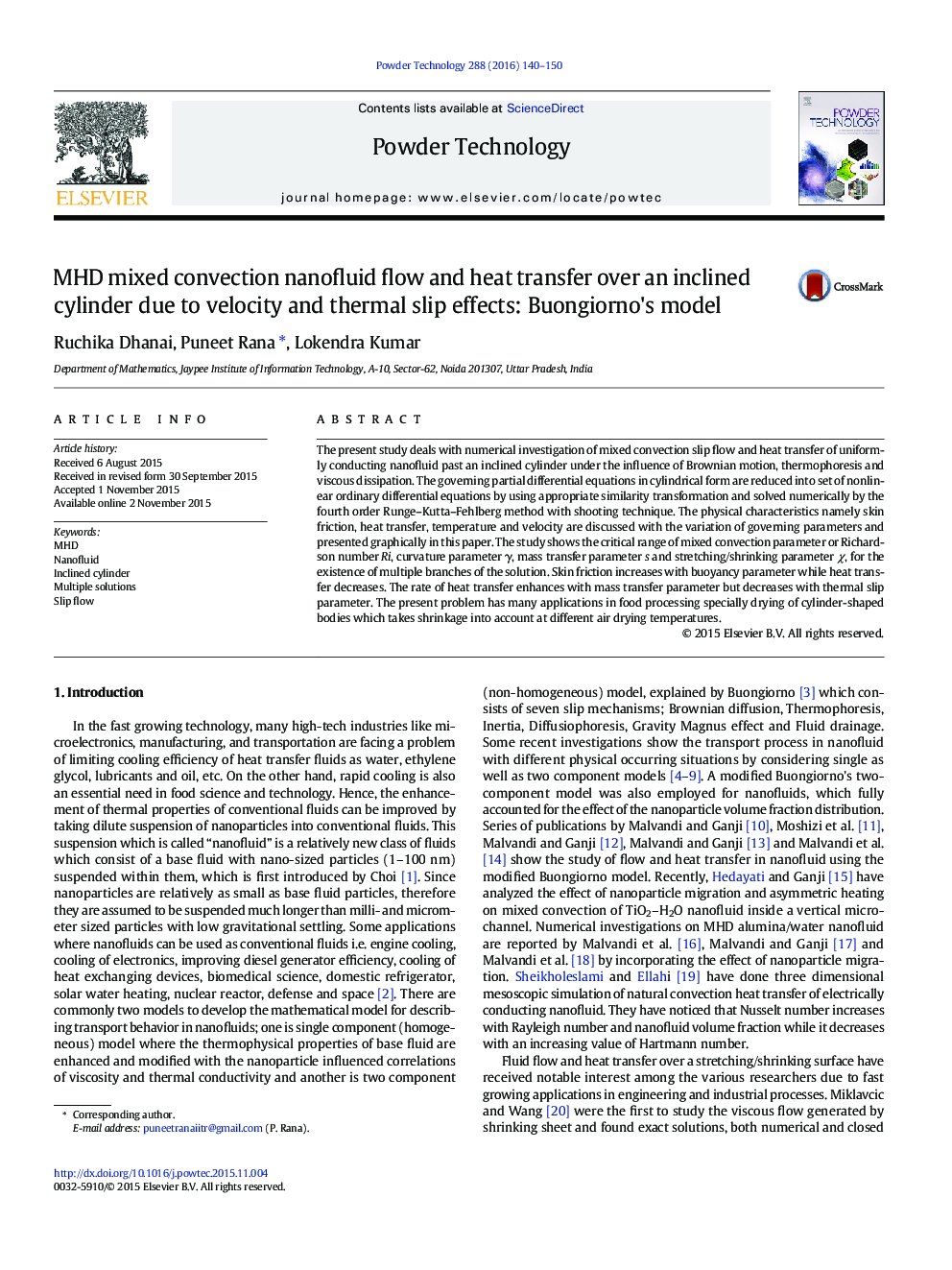| Article ID | Journal | Published Year | Pages | File Type |
|---|---|---|---|---|
| 235492 | Powder Technology | 2016 | 11 Pages |
•Multiple solutions for mixed convection flow and heat transfer over an inclined cylinder are investigated.•The critical values of mass transfer, stretching/shrinking parameter, buoyancy parameter and curvature parameter are revealed.•Skin friction increases with magnetic and buoyancy parameter whereas decreases with stretching/shrinking parameter.•The rate of heat transfer decreases with thermal slip (δ) and increases with curvature (γ).•Thermophoresis parameter (Nt) is decreasing function of rate of heat transfer.
The present study deals with numerical investigation of mixed convection slip flow and heat transfer of uniformly conducting nanofluid past an inclined cylinder under the influence of Brownian motion, thermophoresis and viscous dissipation. The governing partial differential equations in cylindrical form are reduced into set of nonlinear ordinary differential equations by using appropriate similarity transformation and solved numerically by the fourth order Runge–Kutta–Fehlberg method with shooting technique. The physical characteristics namely skin friction, heat transfer, temperature and velocity are discussed with the variation of governing parameters and presented graphically in this paper. The study shows the critical range of mixed convection parameter or Richardson number Ri, curvature parameter γ, mass transfer parameter s and stretching/shrinking parameter χ, for the existence of multiple branches of the solution. Skin friction increases with buoyancy parameter while heat transfer decreases. The rate of heat transfer enhances with mass transfer parameter but decreases with thermal slip parameter. The present problem has many applications in food processing specially drying of cylinder-shaped bodies which takes shrinkage into account at different air drying temperatures.
Graphical abstractFigure optionsDownload full-size imageDownload as PowerPoint slide
